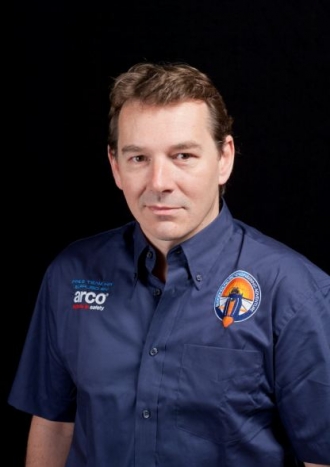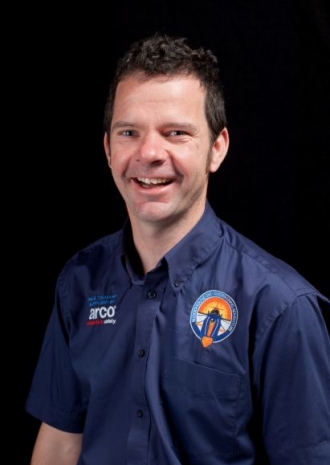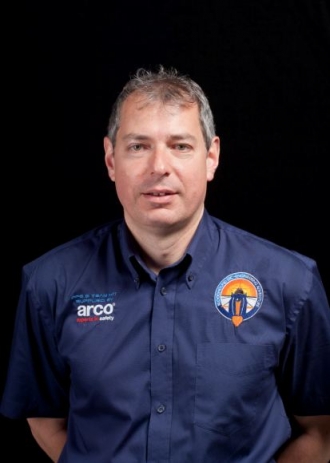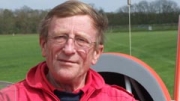Like most pilots, I live in a certain awe of engineers, and especially design engineers. On the one hand they create wondrous machines which oafs like me then get to fly while they themselves mostly don’t – or anyway not usually as pilots. I can never quite get my head around this. If I designed an aeroplane – which would probably look like a cross between a Wright Model A and a lampshade – I’d sure as hell want to fly it myself, even if it flew like it looked, which it probably would. But these engineers march to different drums. Their world, their fulfilment, is the clever fundamental designs and the clever bits and pieces that go inside them.
Clever… most of the time.
I have also known aeroplanes which should really have been wheeled straight out of their birth-hangars into a museum, or better yet a landfill, thereby economising on the test-flying programme and also the wear and tear on the test pilots’ reserves of nervous energy and bowel control. This can especially apply when extensive modifications have been made to the original. In this case watch the engineers’ hands as you taxi out, and if more than 50% of fingers are crossed, develop a minor snag and return forthwith to your point of origin for a serious tête-à-tête.
Does any of the above apply to BLOODHOUND?
Well, certainly not the second main paragraph. In fact, the BLOODHOUND team are a quite exceptionally talented, innovative and painstaking bunch. Which they had better be. Even more, they also have to be outstanding polymaths, because they are not infrequently called upon to undertake tasks which more conventional engineers do not have to consider over-much. (This is not entirely true, but you’ll see what I mean in a moment).
Take a new jet fighter – the ‘new’ being anyway a contradiction in terms, since the gap between start of design and beginning to creep into military service can quite easily be 20 years or more, as it certainly was with Eurofighter. (Which I have always thought of as being most aptly named, since it was the result of a great deal of infighting between Euro nations. The final name ‘Typhoon’ suggests either stormy weather, a particularly lethal – both to the enemy and its own pilots – British ground attack aircraft of WWII, or a certain brand of teabag. You tell me).
Anyway. Take a new jet fighter. Ten years at least on the initial drawing boards – sorry, screens. Another ten years on average before it flies – with the screen-work continuing the nonce while build commences. By this time the design is certainly obsolete by new-design standards – but then so also are all the opposition, who all have exactly the same problem, so you just hope you’re not quite so obsolete as the Other Side. Generally the Yanks and Russians are a bit quicker because they only have the benefit of one Government poking it around rather than four. But I digress…
So – how many engineers and for how long to design this fighter and build the first prototypes?
Well, I don’t know. Aircraft manufacturers and Government agencies seem curiously reluctant to discuss these matters in detail for some reason. (Especially when design and manufacture is split between four nations. You are, for example, going to look an awful bunch of Dorks if half of it comes out using metric nuts and bolts and the other half AF). But let’s take an educated guess and say 1,000 designers and engineers working for the first decade. Okay, remove the weapons systems (which, if new, notoriously run late) and call it 700 designers for that ten year period for the actual aeroplane. (Not that in this day and age the aeroplane usually can be much separated from the weapons systems anyway).
So now let me resort to a little bit of maths – or simple sums, to get it down to my level. 700 designers over 10 years adds up to 7,000 man-years of work in the modern parlance. If that sounds formidable then try translating it again into man-days: 250 man-days per year per guy (given weekends and holidays) is normal, so 7,000 man-years adds up to 1,750,000 man-days.
Now if you’re like me I know these figures will hold all the interest of watching a political Party Conference or (preferably) observing a turnip patch grow. But I will not be long.
A normal man-year is reckoned – possibly a niff optimistically – at about 1,800 working hours. So 7,000 man-years equals 12,600,000 man-hours.
Twelve million six hundred thousand man-hours. For one fighter. Before you include the people who are going to build it and/or bits for it…
Honesty compels me to repeat I am by no means sure of this figure, being as them as what knows ain’t saying. So I may be out. In fact I may even be considerably out. But even if I’m by out by a factor of two – which I doubt – this either brings the man-years down to 3,500 and the man-hours down to 6,300,000, or goes the other way and takes the years up to 14,000 and the hours up to 25,200,000. However you cut it, a very great deal of time.
A similar thing applies to Formula One. An average – not the biggest – FI team employs about 180 design engineers including aerodynamicists full time. That’s 45,000 man-days p.a. Or 324,000 man-hours…
But BLOODHOUND’s development so far has taken just 30 man-years. Some 54,000 man-hours. So let’s just compare roughly, using round figures:
|
Jet fighter: |
12,500,000 man hours. |
|
Pair of F1 cars: |
325,000 man hours p.a. ongoing |
|
BLOODHOUND so far: |
55,000 man hours. |
Which means that BLOODHOUND has so far eaten up man-hours of less than one half of one percent of a fighter development project. Roughly. Or less than one-sixth of the design time of running one F1 team for one season only. Roughly.
Which is going very good indeed. Especially for a project which in some ways is even more complex than a jet fighter – there has been little market, for example, for even the most vicious low-level intruder aircraft to operate a rocket as well as a jet, and to do so at a maximum height of three inches at Mach 1.4 while dangling its wheels on the deck.
There’s always a but…
Very good going.
But…
You notice how there’s always a but.
In this case the but is that the team has vowed to have the car up and running on the Hakskeen Pan in 2013.
Which, given the delays in the programme up to now, is an extremely tall order. No reasonable person could criticise the delays. If you set out to do something completely unworldly, then you are going to hit snags. Not might hit snags – you are going to hit snags. March into Dragon Territory and you can hardly be astonished at the odd ominous hiss and whiff of brimstone.
But marching thus, you do have to stop every now and then for a reality-check.
Which is why we are all sitting here now in the BLOODHOUND Technical Centre main conference room. Every month the design team hold an Engineering Design Meeting (EDM) to get everyone up to speed on what everyone else is doing. Normally this is fairly short because everyone pretty much already knows what everyone else is doing, so it’s mainly a brainstorming session.
But not this one. Or, well it is, very much so, but it’s rather more than that. This one is a sort of super-reality check. And it isn’t scheduled to last a few hours… but two days.
 Dan Johns - Program Architect
Dan Johns - Program Architect
Why?
Well, let me introduce you to one Dan Johns. Dan is just coming up to 40 years old – the young whelp – but has already had a star-spangled career in M&T (methods and tools) and M&P (materials and processing) in the aerospace industry. He is the relatively recently appointed Program Architect of BLOODHOUND. Which boils down as… well, I expect Dan will grumble at this, but a sort of one-man pace-setter and Chief Copper on the whole kit and caboodle. So he has been sitting down with the rest of the design scientists and bending their ears about how many man-hours more they now require for the desired end result – which is where the team has had to become polymaths, as mentioned earlier. Or perhaps soothsayers…
The current design team is roughly ten persons. It may sound silly to say ‘roughly’, but some people in the BTC have other roles as well, and some VVIPs – such as Ron Ayers and John Davis and Daniel Jubb – work outside the BTC anyway. Which is why young Johns prefers to talk in the arcane language of FTE’s – manpower-speak for Full Time Equivalents, which pretty much explains itself.
Well, Dan sat down with every engineer. And twisted their arms for estimates as to how much longer they need for every detail in terms of FTE’s.
And the answer added up to another 36,000 man-hours. In one year.
Aaah. Problem.
36,000 man-hours in one year requires a team of 20 people. Which BLOODHOUND currently ain’t got.
And cain’t easily get. One problem – inevitably – is money. BLOODHOUND is in fact slightly flush at the moment – by BLOODHOUND standards – and more is in the pipeline. But money in a project like this is always like a tea urn with the tap stuck open at the bottom and heavy evaporation occurring at the top. The project currently costs £12,000 a day and it is amazing how the days add up. And that £12,000 a day is due to escalate as time goes on to add up to £4.5 million over the upcoming period to running…
Getting the right people
But that isn’t the only problem. The other side of the coin is getting the right people. Not just the right skills – certainly difficult enough to start with – but also people who will fit into the team. If you’ve got a phalanx of 200 designers and Stinky Cholmondely doesn’t happen to get on with Fatface Bloggs you can probably live with it to an extent, especially if you can separate them by about an acre of other people’s desks. But in a small team of 15 to 20 – no. Everyone has to fit in. So recruitment is not – not – easy.
Anyway. So this particular Engineering Design Meeting is to look at ways of – if there are any ways of – reducing this 36,000 man-hours. In fact, ideally chopping out a cool 15,000 hours altogether. I find myself blinking.
And also possibly culling some of the budgets would be kinda nice.
Oh, and then there’s weight, as well. Rather like mankind in the executive lunchtime of life, BLOODHOUND has recently shown a distressing tendency to put on a few pounds during the final design stage. No surprise here – show me any design of any vehicle, be it car or aircraft, which didn’t put on weight in its final stages, and I’ll show you a manufacturer who simply kept schtum about the target-weight in the first place. BLOODHOUND openly announced at the beginning a target of 7,500 kg. And to achieve this now it would be awfully super if the pup could actually contrive to lose maybe 500 kg…
One of the team sums it up over a glass of Italian car-wash in some echoing pizza emporium which for reasons slightly beyond me the mob seem to regard as the place for a big night out.
“What BLOODHOUND needs right now is some tough love”.
Tough love and the delivery of same
In the BTC, Dan Johns chairs the meeting. The objective, he states, is to bring up all possible thoughts re the above three subjects, however outlandish such thoughts may seem. No restrictions, no holding back. Toss any thoughts into the ring – this is not a design or policy session, but a freewheeling thinks session. You never know – something you say might spark off an idea from someone else. Pure brainstorming. Which may come to anything or nothing. Thinking from outside the box…
Dan’s eyes momentarily flicker over me as he looks around. Perhaps he thinks my middle name is ‘Outlandish’, in which case he would be in considerable confluence with various bank managers and Civil Aviation Authorities over the years. I do my best to look impassive. I is a pilot, so with one flick of a slide-ru – sorry, computer screen – any engineer can make me look a fool. It is superfluous to requirements if I then open my mouth and prove it.
(And anyway, if he is thinking this, then I consider it a bit rich coming from Dan, whose idea of a large afternoon’s recreation is to deliberately and with careful aforethought hurl himself off a 100 foot Cornwall cliff into the sea without the benefit of a parachute. Now I don’t mind flying upside-down at 100 feet, but taking a deep breath and jumping into the ‘oggin from that height would definitely involve me acquiring a brown wet-suit).
Dan has a perfectly unconscious sense of drama. In quiet engineering terms he opens the proceedings by talking the unthinkable. I paraphrase…
In the current state of the nation BLOODHOUND can either:-
1) Re-plan to hit the desert a year later in 2014 with a potentially 1,000 mph car.
2) Simplify or even eradicate some of the upcoming design tasks so as to be ready to run in ’13, but with the target-speed for that year lowered to 850 mph. Still a new Land Speed Record and most definitely still an ultimate 1,000 mph objective, but reached by stages in ’13 and ’14.
Ron Ayers
(There is of course a third option, which is a major bank robbery, but Dan fails to mention this, and looking around the room I am forced to conclude that it probably isn’t a starter. Pity in a way, because a little bit of me has always wanted to do that, and with all this brain-power to hand – oh well, never mind…)
Ron Ayers is a supporter of option (2), and Ron is always listened to.
“At least a dozen Land Speed Record holders have been back to their run-tracks three times before reaching their objectives. With fairly long weather windows at Hakskeen we may be able to cut it to two. But a stepped plan, which is what we had originally anyway, makes a lot of sense. Remember that the problems we perceive now may not be the ones we encounter in the desert, and a pause will give us time to utilise that running experience”.
Ayers’ hoss-sense. There are nods all round the table. Basically, motion accepted.
Will it save man-hours? Money? Or weight?
Copious charts adorn the wall, and Dan Johns has set three main criteria for every subject and suggestion.
Will it save man-hours?
Will it save money?
Will it save weight?
With regard to power, how much of anything the two-tier approach will save hinges mainly on one question – can 850 mph be achieved using the rocket as a mono-propellant instead of a full-blown hybrid? The hybrid Test and Acceptance programme will continue as planned, but using mono in ’13 (plus perhaps a couple of ‘low speed’ hybrid runs for shake-down purposes) would certainly save some engineering time, especially in terms of the hot-rocket extraction kit. It was always planned to run mono firings at first anyway – so could mono be enough for 850…?
Right here at the conference table Ron Ayers taps his laptop to bring up his own personal thrust-weight-drag programme, which is something NASA might give its eye-teeth and a couple of thousand goats and camels for. Tap tap, tap tap…
 Brian Coombs
Brian Coombs
“Just over 850 for a 7,500 kg car. Some 830 mph for an 8,000 kg car”.
So – distinct possibility. To be investigated further. Moving on…
Brian Coombs raises his hand. I have been waiting for this. In a team of highly lateral thinkers this Coombs is probably the most horizontal of them all, and never afraid to spring a surprise. Although I suspect the only one to be seriously surprised is going to be me, since I am not there every day at the BTC.
How about, says Coombs, scrapping the UK runway tests altogether? Do all the testing on the desert? Thus removing the need for a different set of runway wheels using Lightning tyres, plus a whole programme of four-wheel runway brakes.
This makes a lot of sense, given long-period desert access. It just took Coombs to challenge the pre-conceived notion. Ron Ayers is in fact the only one disagreeing with it, and that not by much. A few runway runs, he says, are seriously valuable in shaking down systems, even if they are only up to 100 mph or so. And for that you don’t need special wheels and brakes, merely rubberised/carbon sort of ‘bandages’ around the solid wheels. Not as simple as that, of course, but apparently not too difficult…
Savings: 1,900 man-hours of runway-run design, or one whole man-year; £95,000 of budget; weight N/A.
More thoughtful nods.
Second Coombs notion – do away with the airbrakes for the ’13 runs, and rely on two completely separate parachute systems to give primary and back-up stopping.
Definitely under the heading of tough love.
Savings: maybe an initial 700 man-hours design-wise (plus development time), 150 kg in weight – but 300 more man-hours in the para system design.
This one does not go over so big. There are pursed lips, including mine. Ron Ayers sort of espouses it providing the two para systems are completely independent, but this is almost like damning by faint praise. Two separate deployment systems might be all fine and dandy, but parachutes-only are still relying on just one method of slowing down. And some mumchance which may afflict one parachute could also be repeated in the back-up…
 Mark Chapman
Mark Chapman
Chief Designer Mark Chapman speaks in a soft voice, and belongs to the school that says you are learning when your ears are open and not learning when your mouth is open. He is quite deliberately not chairing the meeting, but mostly listening.
On the second day he says: “We are retaining the airbrakes”.
And that is that. No-one is in the least phased, especially Brian Coombs. This here is a meeting of notions and ideas for the chewing of – not necessarily of convictions. It is a pure ideas session.
The next Coombs notion concerns the 4,700 hours (two-and-a-half man-years) allocated to designing the Mission Control Trailer, the telemetry from the car thereto, and the systems required for the Supercats.
This is complex. The car’s on-board computers will record everything from wheel-bearing temperatures to engine parameters to supersonic shock progression to my – sorry, Andy Green’s – heart rate and coffee-cup level. But how much of that actually needs real-time telemetry back to Mission Control during a during a 90 sec mission? Well, in fact only those that might cause Control to yell; “Abort, abort, abort!” for a reason I – yes, yes, Andy – don’t simultaneously already know about from the car’s systems. Such as a couple of Aardvarks starting a family four miles down-track.
For the rest, says Coombs, downloading from the car at run-end will be perfectly adequate. Saving 1,700 design man-hours plus a further 750 if you bin the direct media satellite up-link from the car and do it from Mission Control. Okay, it’ll be going out a couple of minutes later, but does that really matter? Against saving one-and-a-half designing man-years…?
Coombs is far from the only contributor, and the meeting goes on. Rear wheel fairings – could save 1,000 man-hours if you abandon them for 850 mph. More than half a man-year. Out-sourcing certain design tasks – even if you actually have to pay for them, which would previously have been anathema to BLOODHOUND’s soul, but in fact may be cheaper and quicker than any in-house solution.
But of course you’ve still got to find the right suppliers, and suppliers who can deliver on time – which is NOT easy. During production, delivery time of bits is of the essence – quite simply if you ain’t got it, you can’t fit it. It becomes rather like a maddening house restoration. Decorator says to client: “I can’t touch this until the plasterer has finished”. Plasterer says: “I can’t do this wall until Sparks has been in and fixed the electrics”. And Sparks says: “I can’t do that until the plumber’s sorted the heating pipes – and he’s gorn off on holiday”. Multiply that by BLOODHOUND….
The meeting grinds on. After what seems to me like a lifetime – self having a peculiar dread of long meetings – Mark Chapman sums up.
“We may have saved about 7,500 hours”.
About four man-years.
“Plus about £100,000”. He pauses. “I think we’ve proved there isn’t a big chunk of car we don’t need any more. Funding will increase in the future, but we have to work with what we’ve got now. We now need to increase the design team by four less people than we did. That’s an achievement”.
And so it is. Tough love.


